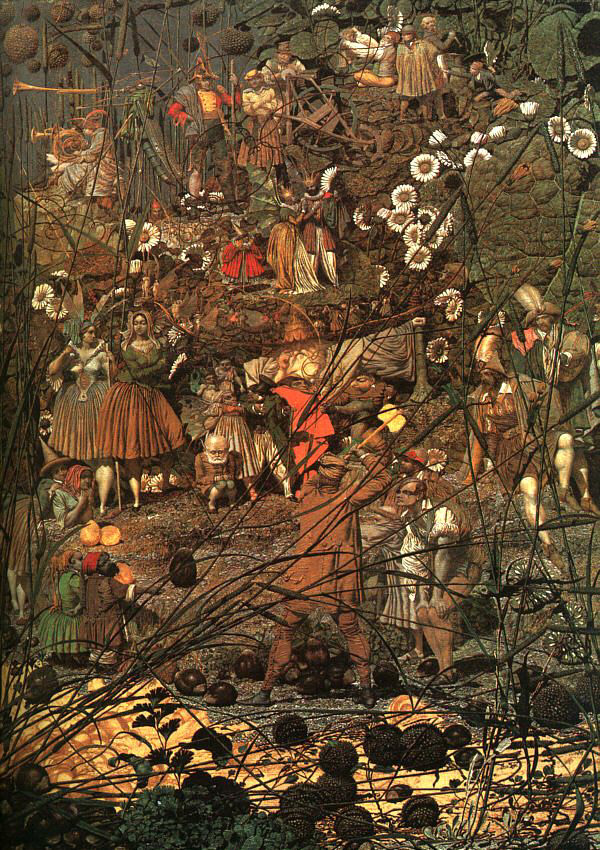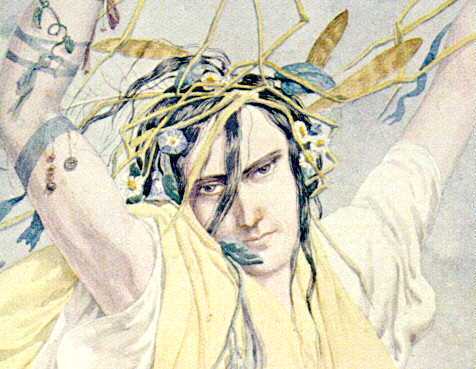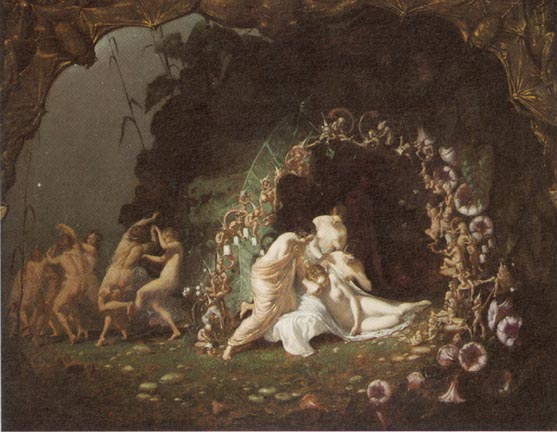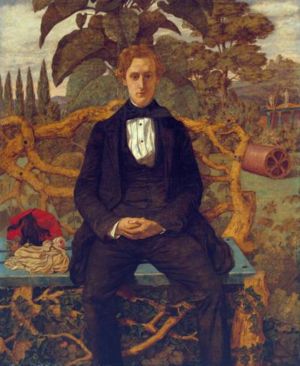Richard Dadd (1817 – 1886)
Get a Dadd Certificate of Authenticity for your painting (COA) for your Dadd drawing.
For all your Dadd artworks you need a Certificate of Authenticity (COA) in order to sell, to insure or to donate for a tax deduction.
Getting a Dadd Certificate of Authenticity (COA) is easy. Just send us photos and dimensions and tell us what you know about the origin or history of your Dadd painting or drawing.
If you want to sell your Dadd painting or drawing use our selling services. We offer Dadd selling help, selling advice, private treaty sales and full brokerage.
We have been authenticating Dadd and issuing certificates of authenticity since 2002. We are recognized Dadd experts and Dadd certified appraisers. We issue COAs and appraisals for all Dadd artworks.
Our Dadd paintings and drawings authentications are accepted and respected worldwide.
Each COA is backed by in-depth research and analysis authentication reports.
The Dadd certificates of authenticity we issue are based on solid, reliable and fully referenced art investigations, authentication research, analytical work and forensic studies.
We are available to examine your Dadd painting or drawing anywhere in the world.
You will generally receive your certificates of authenticity and authentication report within two weeks. Some complicated cases with difficult to research Dadd paintings or drawings take longer.
Our clients include Dadd collectors, investors, tax authorities, insurance adjusters, appraisers, valuers, auctioneers, Federal agencies and many law firms.
We perform Richard Dadd art authentication, appraisal, certificates of authenticity (COA), analysis, research, scientific tests, full art authentications. We will help you sell your Richard Dadd or we will sell it for you.

Richard Dadd was an English painter of the Victorian era, noted for his depictions of fairies and other supernatural subjects, Orientalist scenes, and enigmatic genre scenes, rendered with obsessively minuscule detail. Most of the works for which he is best known were created while he was incarcerated in a psychiatric hospital.
Dadd was born at Chatham, Medway in Kent, England, the son of a chemist. His aptitude for drawing was evident at an early age, leading to his admission to the Royal Academy of Arts at the age of 20. With William Powell Frith, Augustus Egg, Henry O’Neil and others, he founded The Clique, of which he was generally considered the leading talent.
In July of 1842 Sir Thomas Phillips, the former mayor of Newport, chose Dadd to accompany him as his draftsman on an expedition through Europe to Greece, Turkey, Palestine and finally Egypt. In November of that year they spent a grueling two weeks in Palestine, passing from Jerusalem to Jordan and returning across the Engaddi wilderness. Toward the end of December, while travelling up the Nile by boat, Dadd underwent a dramatic personality change, becoming delusional and increasingly violent, and believing himself to be under the influence of the Egyptian god Osiris. His condition was initially thought to be sunstroke.

On his return in the spring of 1843, he was diagnosed to be of unsound mind and was taken by his family to recuperate in the countryside village of Cobham, Kent. In August of that year, having become convinced that his father was the Devil in disguise, Dadd murdered him with a knife and fled for France. En route to Paris Dadd attempted to murder another tourist with a razor, but was unsuccessful and was arrested by the police. Dadd confessed to the murder of his father and was returned to England, where he was committed to the criminal department of Bethlem psychiatric hospital (also known as Bedlam).
Which condition he suffered from is unclear, but it is usually understood to be a form of schizophrenia. Alternatively, it is sometimes claimed that he suffered from what is now known as bipolar disorder. He appears to have been genetically predisposed to mental illness; two of his siblings were similarly afflicted, while a third had “a private attendant” for unknown reasons.
In the hospital he was allowed to continue to paint and it was here that many of his masterpieces were created, including his most celebrated painting, The Fairy Feller’s Master-Stroke, which he worked on between 1855 and 1864. Also dating from the 1850s are the thirty-three watercolor drawings titled Sketches to Illustrate the Passions, which include Grief or Sorrow, Love, and Jealousy, as well as Agony-Raving Madness and Murder. Like most of his works these are executed on a small scale and feature protagonists whose eyes are fixed in a peculiar, unfocused stare. Dadd also produced many shipping scenes and landscapes during his incarceration, such as the ethereal 1861 watercolor Port Stragglin. These are executed with a miniaturist’s eye for detail which belie the fact that they are products of imagination and memory.

After 20 years at Bethlem, in July of 1864, perhaps because Bedlam was overcrowded, Dadd was moved to a new lunatic asylum at Broadmoor, outside London. Here he remained, painting constantly and receiving infrequent visitors until January 7, 1886, when he died, “from an extensive disease of the lungs.”
The Fairy Feller’s Master-Stroke, was to become the title of a song by the rock band Queen. Come unto these Yellow Sands, a play based on his life, was written by Angela Carter. Oliver Knussen considered naming his piece Flourish with Fireworks after The Fairy Feller’s Master-Stroke, as its composition owes a lot to the small, exquisite, quirky details in the painting and contains a similar attempted correlation of large and small scale. The Wee Free Men, a novel by Terry Pratchett, edited in 2003, was in a central part inspired by The Fairy Feller’s Master-Stroke. Pratchett’s friend Neil Gaiman includes a reference to Dadd in Sandman. The painting also is a plot element in The Witches of Chiswick by Robert Rankin.
In 1987 a long-lost watercolor by Dadd, The Artist’s Halt in the Desert, was discovered by Peter Nahum on the BBC TV programme “Antiques Roadshow”. Made while the artist was incarcerated, it is based on sketches made during his tour of the Middle East, and shows his party encamped by the Dead Sea, with Dadd at the far right.) It was later sold for £100,000 to the British Museum.

Still wondering about a British painting in your family collection? Contact us…it could be by Richard Dadd.
